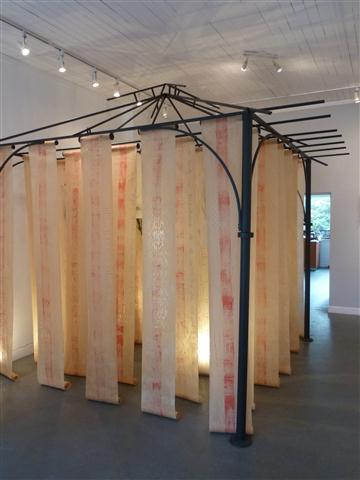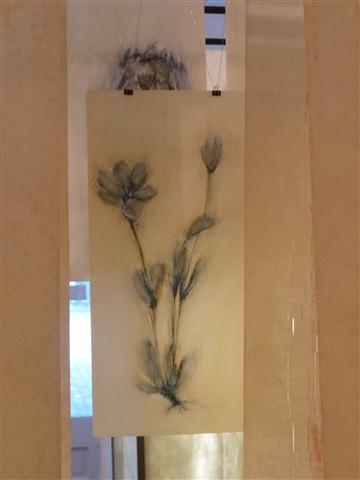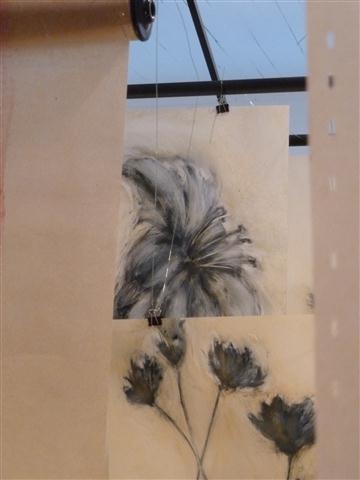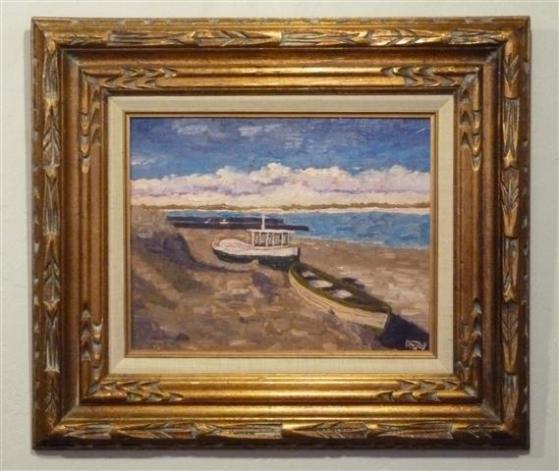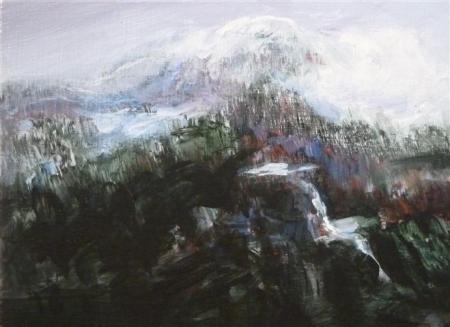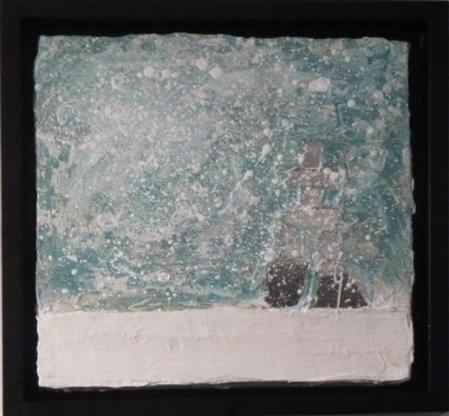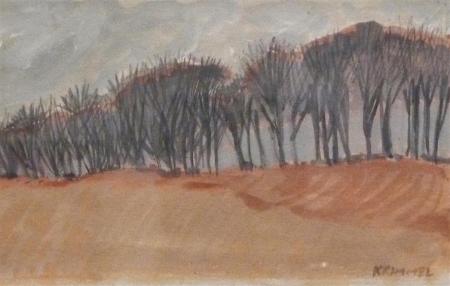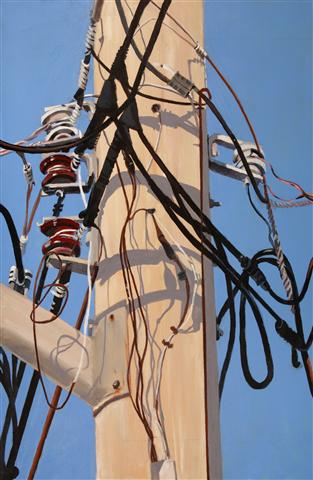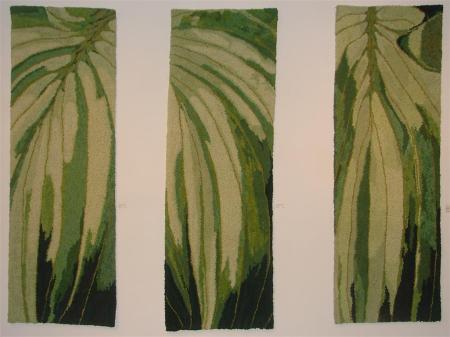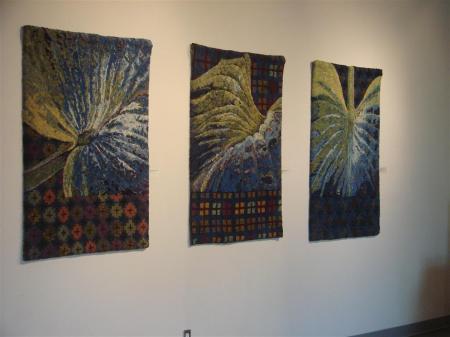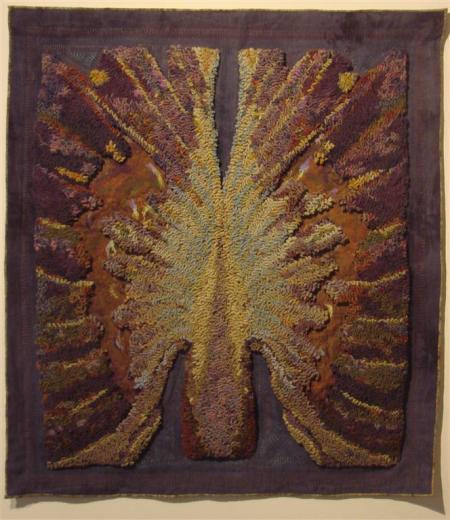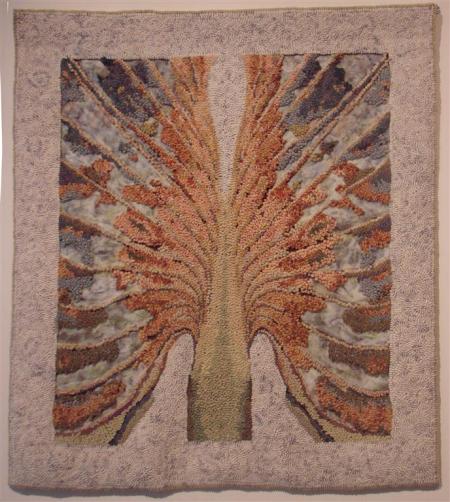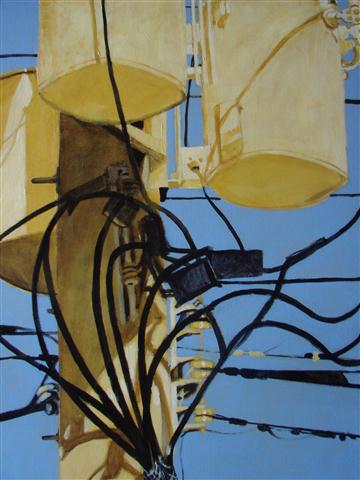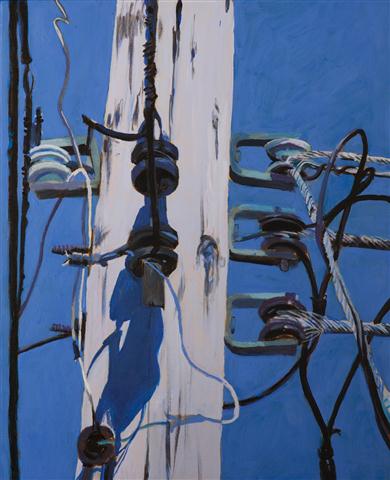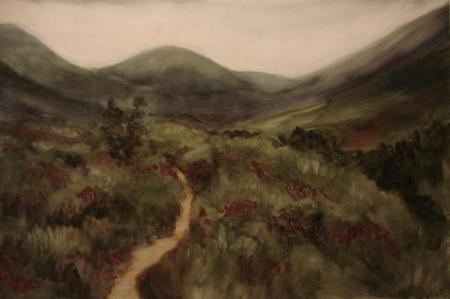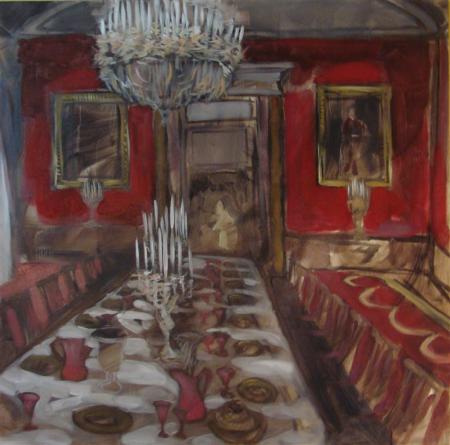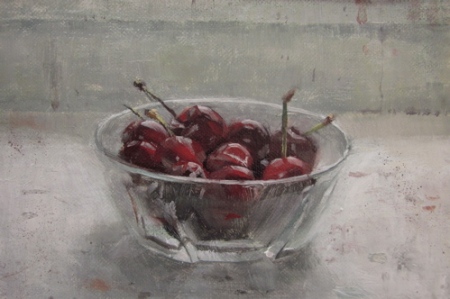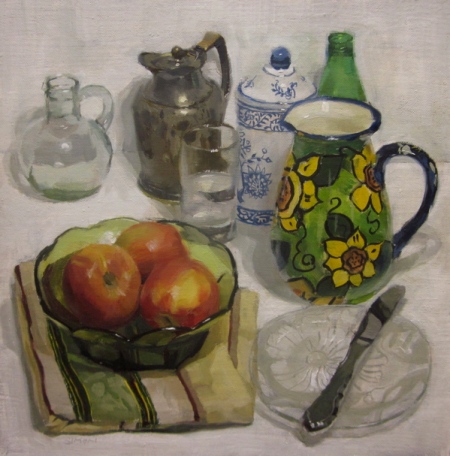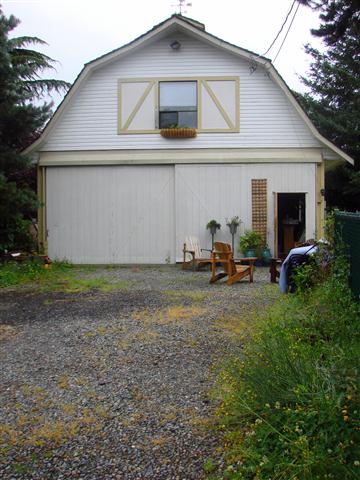
At the end of a short gravel drive behind a rancher-style house in South Surrey (B.C, Canada), is this small barn with a small door on the right hand side. Stepping into the dark interior, there is an unfinished room with not much of interest in it. But beyond that, behind a partition going the length of the barn, is the fairly simple studio of Jim Gislason, an artist with enviable credits for his print-making.
The room may be simple, or should I say, austere, but the work going on in it is nothing of the sort. There is an intellectual theme running through his paintings based on ancient civilizations and myths which I described in an earlier post at the moment of his solo exhibition, “Kings and Queens” at the Elliott Louis Gallery in Vancouver two years ago.
Gislason is the type of person I enjoy a good conversation with. He’s a fine poet and a talented painter in addition to his work as a print maker. He has a tremendous knowledge of English literature and some obscure ancient literature as well (whence come his titles). He quotes from traditional British poets as well as current song-writers such as Bob Dylan. It’s obvious that he has the ability to internalize what he reads or hears as song, to synthesize it and then to recreate it into iconic visual language. Let me say that in a different way:
Gislason has a capacity to absorb ideas from the world around him, to think profoundly about it, mill it about, and come up with some very original, symbolic art work. What is more, he is very articulate about what he is doing. It’s ingenious.
To express his ideas visually, he has devised a unique and complicated way of working. He was fascinated with printmaking techniques, especially silk-screening. In earlier times, this process was used mostly for making posters and advertising. In the late ‘Fifties and early ‘Sixties, this process was brought into the art domain under the name of “serigraphy” to distinguish it from its commercial twin. The process is technically intricate.
A very evenly and tightly woven piece of silk is stretched over a frame. A masking liquid is painted on and then, once it dries, it can be used to make multiple images of the design by use of a squeegie pulling ink over the screen. Where there is no mask, ink goes through. Where there is a mask, none goes through. Several same-sized screens can be used to make overlays of color, so the imagery can be quite complicated and colourful. Mask-making methods have evolved over the intervening years. Even in the late ‘Sixties, photo-transfer masks were being used. They were produced first by exposing a photographic film that could be applied to the screen leaving an emulsion that performs the masking function. Colour separation applied to this process allowed for some fairly realistic images to be produced. Gislason uses the photographic process complete with digital manipulations to create imagery on his silks.

Silk screen with photographic masking showing on LH side and ‘inked’ areas on RH side.
In the process of using serigraphy at the beginning of his print-making career, Gislason discovered that he liked what happened when the inks went through the silk and left-over inks stayed on the screen instead of transferring to the paper. Now he doesn’t bother making multiple images. He has discovered, created a new way of working that hangs somewhere between print-making and oil painting.
I’ve often wondered how he could create his works in this manner because his ‘canvases’ are so large. Now that I’ve seen his studio, I understand his process better. His squeegie is short – maybe just a foot long. In traditional silk screening, the artist would have a squeegie that was just slightly shorter than the rectangular frame’s shortest side. The artist provides ink to the surface and then pulls that puddle of ink from one side to the other of the total rectangle.

Gislason uses oil paints instead of inks to provide more professional, durable and lightfast pigments. He works on a small area at a time, not worrying about doing the whole width at once. The advantage to Gislason is that, while extrudes them through the screen, he can modulate colours as he is working. That means that his colours are no longer flat, as is characteristic of traditional silk-screen printing. He can also modulate the good side before the paint has hardened with palette knife or other tools adding another texture or glaze. It enriches the colours and permits modification of parts of the overall surface so that the textural quality of the entire piece is as varied and as interesting as the rest of the imagery.
The final product, technically speaking, is beautifully crafted with several different aspects all working together – the modulation of colour, the variety and interest in the tactile surface, and the imagery which is not incidental to the whole. It’s no longer a handmade print on paper, but is the screen itself. There is only one image, not multiples on paper.
“My work is figurative,” he says. “Always figurative.”
I have to think this through, since I see so much abstraction in the works leaning against the walls, pinned to the wall, or stacked in the far end of the barn. The face or the figure is somewhat incidental in the overall. In my mind it’s just another shape, but with recognizable detail. I express my question and he answers, “Without the figure, there is little engagement.” He shows me the one and only non-figurative work in the studio and I easily see what he means. The figures are focal points that call out to be explored, considered.

Mostly the figures are heads only, often a head tipped back on the neck, mysterious, evocative; but there is an image with a donkey and another with a one legged person, wings embracing the the figure from behind the head, which gives the impression that the other leg is there, but in shadow. Or is this one of the Queens, seated on a throne, with a single foot coming forward? For me, the ambiguity is a pleasure because then I need to ponder the work and engage with the figure. There are things to discover.
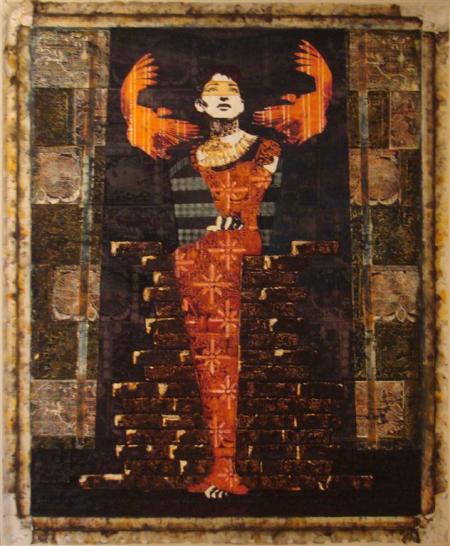
In explaining his imagery, Gislason theorizes, quotes philosophers and classic writers. He speaks of the difference between logic and myth. Logic is linear thinking, cold and calculating. Myth relates to feelings, poetry, magic. It’s the latter that he wants to have shine through in his work. Yet when I look at his silks, I see that there is an equal balance. The overall image may meet the emotional quotient he is seeking, but the formal qualities of the work – the placement of shapes and objects, the overall design are painstakingly considered.
His eyes light up as he talks. His energy bristles but is sure footed. He is a mystery. It’s these contrasts that he resolves that make his work interesting. Logic and myth. Simplicity and complication.

Work in progress containing map imagery
The new work incorporates images of maps, with small block shapes of them repeated to make large continents on the canvas. He continues with his luscious build-ups of texture, impasto painting which contrast with rich coloured flat areas. When you look from afar, it’s one image; when you are close up, there is so much intriguing detail. The edges are still pinned with clear-headed push-pins. They are part of the imagery, holding in place the soft silk edges which act as a signature framing element. The new works are in progress, not yet finished, up on the wall while he ponders the next step, the next modifications to the first layers of paint and the imagery. Orange and cadmium yellows predominate, but most often with a contrasting turquoise to set up a glowing vibration of colour.


Details – Fingerprinted edging with push pin; repeated block of map image bordered by impasto brushwork.
I left the studio feeling very privileged to have been welcomed into the inner sanctum. If you want to see more, check out his web site at jimgislason.com
Many thanks to Ted Lederer of the Elliott Louis Gallery who arranged the visit for me and accompanied me on the journey.
Check out the Elliott Louis Gallery at http://www.elliottlouis.com/
Read about the philosophy of Myth versus Logic in this document:
http://cheer.org.nz/mythoslogos.pdf
